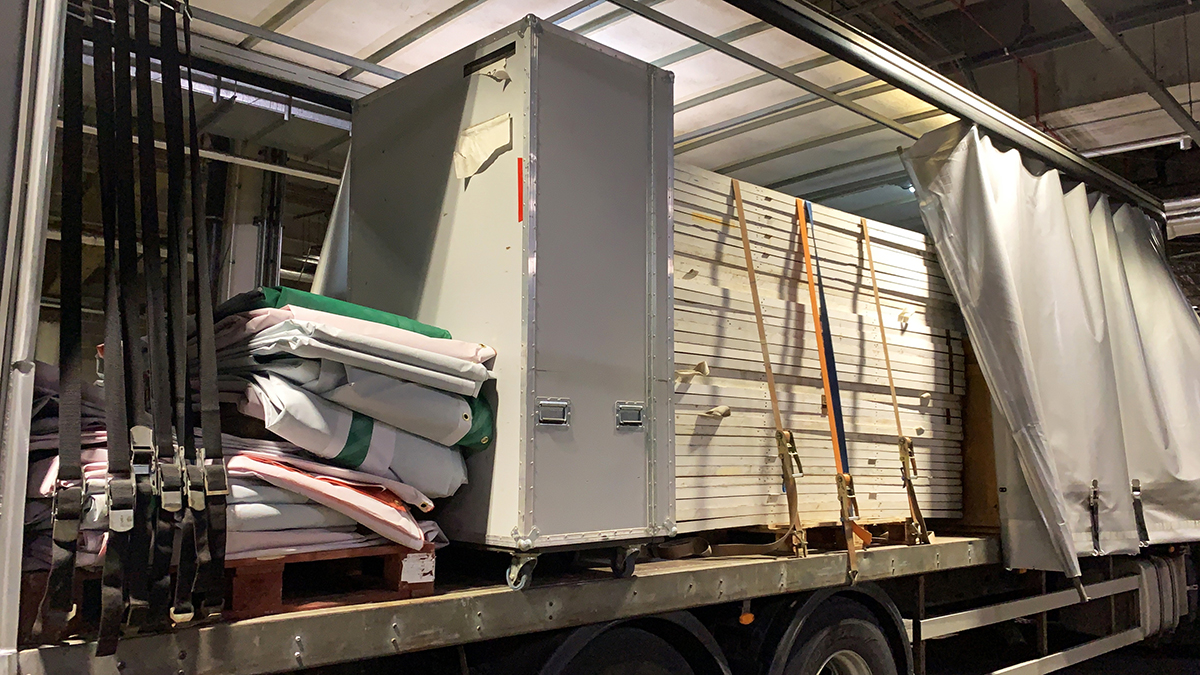Can we get better any time soon at recovering used large-format print for recycling? MacroArt MD Michael Green tackles the questions of how realistic that is, and who is responsible for making it happen.
At the risk of providing an oversimplified response to the question of whether we can recover print once it’s gone out into the big wide world, the clear answer is that the recovery of materials and exhibition collateral for recycling efficiently is eminently realistic. The efforts that MacroArt and many firms within our industry are making in establishing effective material recycling as an integral part of agreements with clients is a promising indication of true intent, and one which will assuredly gain momentum
However, the cold hard truth behind this statement is that for the effective recycling of large-format print to be globally realistic, every single player in every single sector within our industry must work together, in a constant drive for recyclability and sustainability at scale. And thus, it needs to be a universal responsibility that must be embraced by us all. And we need to start now.
The key elements
Indeed, at MacroArt, our journey has already begun in earnest to embrace core elements of the sustainability equation. Firstly, the use of sustainable materials that do not require recycling; secondly, the use of materials that are truly recyclable; thirdly, the identification of certifiable, robust and quantifiable recycling waste streams, into which these recycled materials can be fed.
To encourage this, the team at MacroArt has, for some time, been providing clients with proposals that promote engagement in one or more of these three elements. We offer the choice of multi-use frameworks and hoardings, easily recyclable materials options, and an at-cost recycling element included in our proposals.
This last option provides for MacroArt to de-rig, transport all materials from site, and sort them, before ensuring they are introduced into certified waste recycling streams. In this way, clients can be assured that everything possible is being done to minimise (and already in some cases) eliminate waste.
It is encouraging to see more and more clients engaging in this particular option, and whilst it does not necessarily lead to them immediately creating their own effective closed-loop waste recycling, the increased awareness of its importance is a positive contribution to progress in this area.
A fourth element
All of these first three elements are within our control, and we are making strong, positive and measurable progress in our drive towards true carbon neutrality, by informing clients and making it easier for them to embrace managed waste solutions.
However, in the world of exhibition venues, the ability to ensure effective recycling is more complex and often presents a considerable challenge. The hundreds of exhibitors participating engage a host of different agencies, print firms, stand builders, installers and fabricators - all of which are at different stages in their sustainability journeys. During the break-down of their stands, exhibitors are often provided with limited recycling options, with nothing other than conventional waste skips. Addressing this urgently, together and as an industry, so as to facilitate wider recycling is an absolute imperative.
Progress
Clearly, for our industry to make serious progress in the development of sustainability across our sector, a number of key issues must be addressed, and broader, more collaborative initiatives explored and developed.
The issue, as we all know, is complex and not currently without additional costs, but the move towards true sustainability is no longer an option but a necessity, for both our industry and the wider world.
And as sustainability becomes increasingly embedded in the structure of commercial operations as an essential, everyday part of each and every project, the premiums currently incurred will diminish to the point where cost is no longer an issue.
The future?
Fortunately, organisations like Essa, Fespa and isla are already delivering strong advisory support, enabling collaboration, and working on practical initiatives - such as the development of stronger, more accessible certified waste recycling streams - and providing advice on the sourcing of recyclable materials across the industry. MacroArt is a member, and staunch supporter, of all three.
Furthermore, an increasing number of brands are becoming more vocal in demanding sustainable solutions, and it is only through an industry-wide collaboration that real progress can be made in the creation of robust, accessible and cost-effective recycling streams. Once these are established, recycling will become as much an integral part of daily commerce as pricing, printing and installation.
Major eco project a cinch for MacroArt
A multi-site festivals signage and graphics project has highlighted MacroArt’s eco-capabilities, with 1,500m2 of PVC-free materials used for the events, all of which was recovered afterwards for recycling.
MacroArt was commissioned by Creation Live for its client, Cinch, to handle graphics at the Creamfields, TRNSMT and Isle of Wight Festivals last summer. As the main sponsor of all three events, Cinch made a greatly reduced carbon footprint key to the brief. MacroArt collaborated with experiential expert Creation Live, in partnership with festival structures firm The Halo Group, to design and produce a multi-level activation space from scratch in just over a fortnight, using PVC-free materials throughout, which it estimates delivered a carbon saving of 69% over conventional materials.


